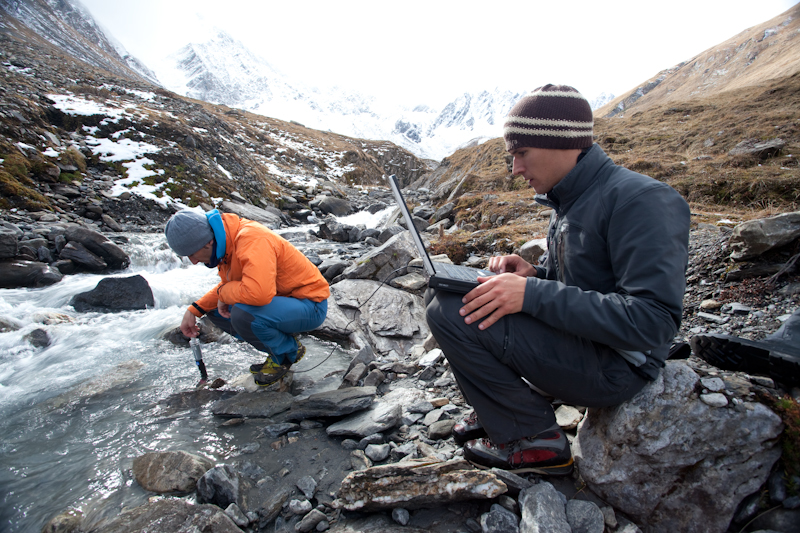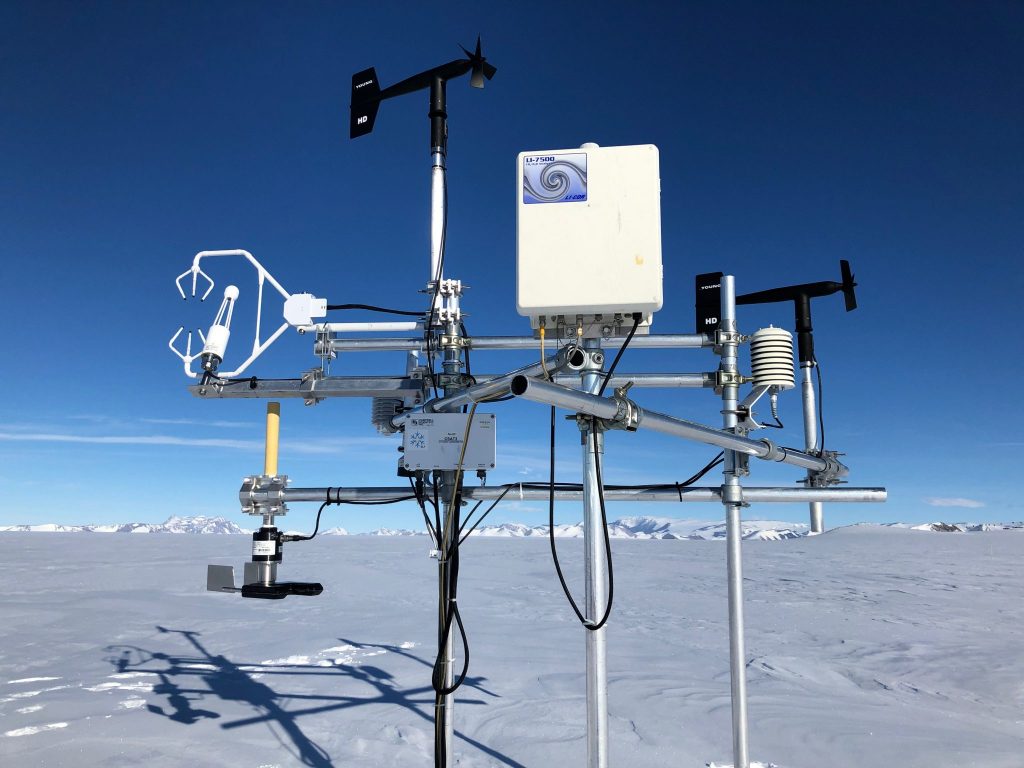Master & SIE Projects

For environmental sensing and robotics projects (including MSc projects) in the ESO group, please refer to the following project page
Analyzing measurements of sublimation and snow transport in Antarctica
Master thesis or semester project
Supervisors: Dr. Armin Sigmund, Dr. Hendrik Huwald and Prof. Michael Lehning

Sublimation is an important process in polar and high-mountain regions because it transforms snow and ice into water vapor. However, sublimation is difficult to measure over a long period, especially in remote and extreme regions such as Antarctica where it is challenging to maintain the instruments regularly. Additionally, wind-induced snow transport typically increases the sublimation rate but can cause measurement artifacts and data gaps. In the literature, multi-month analyses of sublimation measurements at polar sites are rare, focus on the summer months, or involve simple methods, which are affected by large errors in snow transport events. In recent years, expeditions have provided us with unique data sets from a few sites in East Antarctica. For Princess Elisabeth Station (1380 m a.s.l.) and Davis Station (30 m a.s.l.), the data cover more than 12 months, including austral winter. Direct turbulence measurements allow us to quantify sublimation reliably although very intense snow transport can lead to temporary data gaps. A couple of sensors provide additional information on the wind, horizontal snow transport, radiation fluxes, and other weather elements.
The main goal of this master or semester project is to characterize sublimation and snow transport at Princess Elisabeth Station and Davis Station by analyzing the available data sets. In particular, the following research questions are addressed: How frequent are snow transport events? How much do snow transport events contribute to the total sublimation in the study period? How much does sublimation vary with the daytime and seasons? How different are the sites with respect to sublimation and snow transport? The data analysis can be deepened according to the student’s interests. For example, radiation fluxes measured at two different heights can be used to better understand how wind-transported snow particles influence the radiation balance in the lowest layers of the atmosphere. The radiation balance may be an important driver of sublimation but its relationship with snow transport is still largely unexplored. Overall, this project will help to better understand seasonal variations of sublimation and the impact of snow transport on the total sublimation at Antarctic sites.
If you are interested in weather and snow and you like exploring large data sets, this is the right project for you. While you can choose your preferred programming language (R, Python, …), some scripts written in R are available and can help with the initial processing steps.
Development of a Distributed Wind Sensor Network for High-Resolution Wind Mapping in Mountainous Terrain
Master thesis: February 2024 – August 2024
Supervisors: Brandon van Schaik and Dr. Hendrik Huwald

Wind patterns in alpine valleys can have significant impacts on the local climate, as well as on the energy that could potentially be extracted by wind turbines. However, measuring these wind patterns with traditional instruments can be expensive and logistically challenging. In recent years, low-cost wind sensors based on open-source hardware such as Arduino and Raspberry Pi have become increasingly popular, but their accuracy and reliability in complex terrain are still largely unknown. More advanced wind sensors such as sonic anemometers and wind-doppler LiDAR are frequently deployed but are often too expensive to have a fleet of them deployed in close proximity in a valley. This project aims to investigate the feasibility of using a distributed network of cheap wind sensors to measure wind patterns in an alpine valley, and to explore the potential of spatial statistical analysis to extract useful information from the resulting data.
The project will involve designing and building a network of low-cost wind sensors based on Arduino or Raspberry Pi, and deploying them across a grid in the target alpine valley: Passo San Gottardo. The sensors will measure wind speed and direction at regular intervals, and transmit the data to a central database for storage and analysis. The resulting dataset will be analysed using spatial statistical techniques such as kriging, variogram interpolation, and any other spatial analysis that you see fit to identify spatial patterns and correlations in the wind data. The accuracy and reliability of the sensor network will be evaluated through comparison with data from traditional wind instruments, and through field validation experiments.
A master student undertaking this project should enjoy working with electronics and want to perform fieldwork in alpine locations. A background in environmental science, engineering or any other related field, as well as experience with programming and electronics gives you an excellent basis to do a great master thesis project at the CRYOS laboratory!
Master’s internships at WSL institute for Snow and Avalanche Research SLF, in Davos.
Proposal No. 1
Spatial interpolation of Automatic Weather Station (AWS) data: Internship Spatialization
Proposal No. 2
Spatial interpolation of Automatic Weather Station (AWS) data, (Despiking): Internship Despiking
Proposal No. 3
Monitoring data collection for snow and avalanche research: Internship Snowtinel
Contact:
Dr. Mathias Bavay
[email protected]
081 4170 265